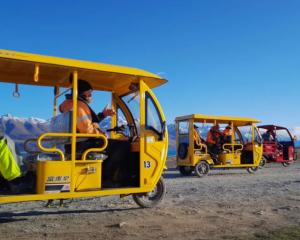A property within the newly-identified Mycoplasma bovis control zone has tested positive for the cattle disease.
Last week, it was announced the Wakanui area of Mid Canterbury will face strict biosecurity measures, including a Controlled Area Notice (CAN), to eliminate a pocket of infection in the area.
M. bovis programme director Simon Andrew today confirmed a beef property in the red area of the CAN is infected.
"We are also undertaking testing on another property in the area which is likely to be confirmed infected in the coming weeks," he said.
The CAN, which comes into force on October 13, is a precautionary measure to restrict the movement of cattle in an effort to stop M. bovis circulating in the area.
It coincided with the planned depopulation of a nearby feedlot, which Andrew said was an important step toward eradication.
While the area is already under tight controls, and farms with known infection or suspected infection are under movement restriction, the CAN provides an extra layer of protection for farmers outside of the boundary by restricting animal movements out of the area.
"We are intensifying our efforts to get to the tail end of the disease faster, which means farmers can expect to see more testing and more investigation into areas where there is residual risk, such as any possible transmission routes," Andrew said.
Background surveillance and risk movements will continue to be followed up by MPI staff, along with the national Bulk Milk Test (BMT) and Beef and Drystock Cattle surveillance programmes.
Andrew explained that this meant farmers could expect to continue to see M. bovis Eradication Programme staff on-farm.
"Some farmers will be called to confirm whether they have cattle on their property for some time."
MPI's BMT programme was going well, with no unexpected finds in recent months, Andrew said.
"August 2022 is on track to be the first August since 2018 with no confirmed infection detected via bulk tank milk surveillance."
Andrew acknowledged the hard work of the 272 farmers who had to cull their herds thus far and said it was crucial to protect the investment made to date.
"It's also more important than ever that farmers continue to keep accurate NAIT records, as well as details of on-farm activity.
"Tracing animal movements remains our best tool to quickly track the movements of infected animals, or animals at risk of infection."
There are currently four confirmed properties in Mid-Canterbury - the only area in the country with infection.
This compares to about 40 nationwide at the height of M. bovis.













